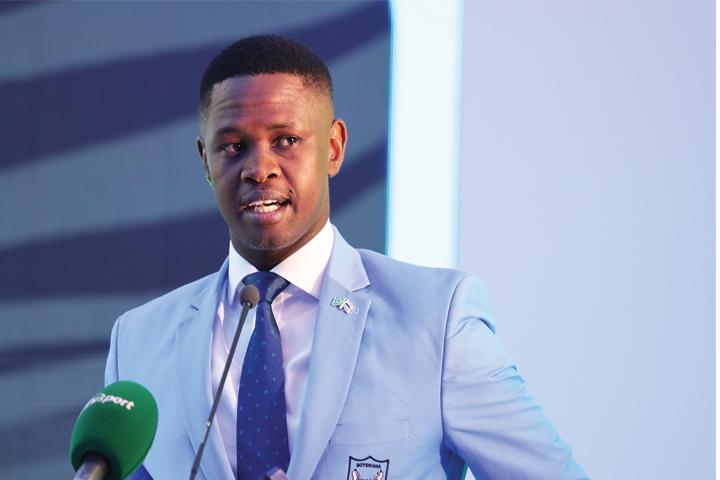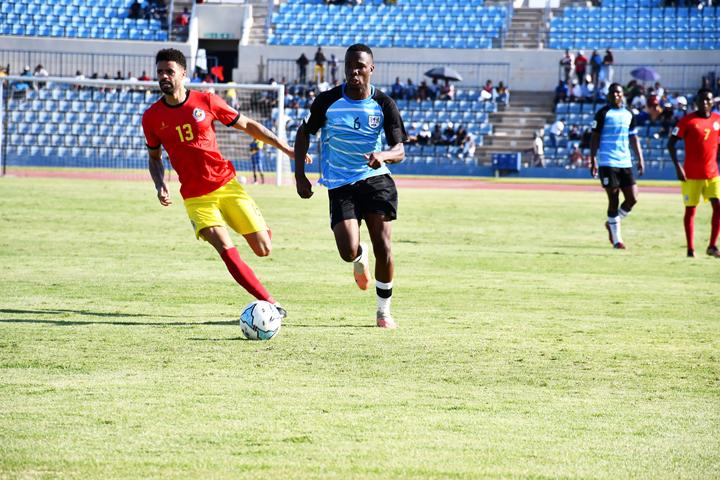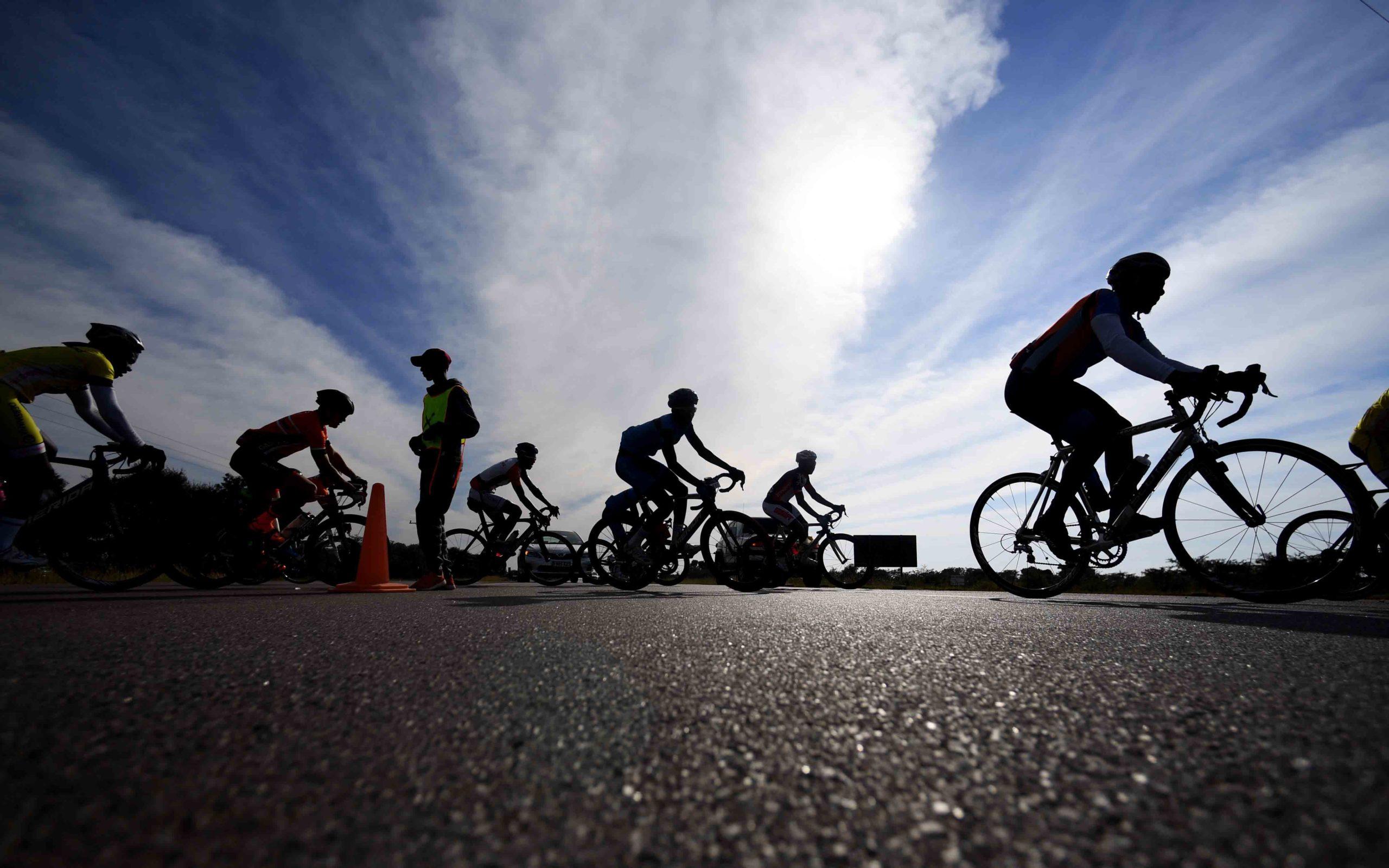The battle to rescue Constituency football
It all started on one good afternoon in the last week of August when Kgosana Masaseng, a highly regarded football analyst and Players’ Union spokesperson, made a call to FIFA development officer, Ashford Mamelodi.
Masaseng wanted to meet with Mamelodi to discuss the future of Botswana football in the context of the controversy-ridden Constituency football tournaments. The two would later meet in a Portuguese restaurant at Gaborone’s Game City shopping mall.
As they dined, the hotly debated topic of Constituency tournament was discussed. More was to follow. Little did Masaseng and Mamelodi realise that by starting discussions around this issue, a solution to the most troubling football matter was in the offing.
Mamelodi left the meeting with an assignment to think about a solution that the Botswana Football Association (BFA) and Government could easily agree upon. A new date for the second round of discussions was later agreed on and secured. This time, the plot thickened. Masaseng was tasked with coming up with a list of key strategists to help fast-track the discussions to break the constituency tournaments stalemate.
Politicians from across the spectrum were at the time at each other’s throat especially after information spread that FIFA had given the BFA until September 22 to come up with convincing answers to the issue of Constituency tournaments. The BFA, according to those close to the game, had written FIFA in Zurich, complaining about the impact of Constituency tournaments on mainstream football in Botswana.
FIFA swiftly sent a two-man delegation to Botswana on a fact-finding mission to assess the impact of constituency tournaments, which were introduced in 2008 in an attempt by Government to address youth unemployment, among other thorny issues. It was called the constituency sport tournament programme as it coincided with the political constituency boundaries for its implementation and administration.
The FIFA delegation after meeting both Government officials led by the acting Minister of Youth, Sport and Culture, Vincent Seretse, and the Tebogo Sebego-led BFA, wasted no time in giving feedback to key stakeholders. In no time, the mission was completed and a report compiled for the world governing body.
It was not long before word was out that Botswana risked suspension from the world soccer governing body. In trying to address the problem, the BFA met with the Botswana National Sports Council (BNSC) to find a common ground on this hotly contested matter. Apparently, their proposal was shot down by Seretse, who is said to have maintained that his Government would not back down even in the face of a FIFA sanction.
Opposition politicians took to the freedom squares, pointing accusing fingers at the ruling party for bringing the country’s football into disrepute. However, the ruling Botswana Democratic Party (BDP) – through the then Minister of Youth, Sport and Culture, Shaw Kgathi – was steadfast in its response to its critics, accusing them of reporting the matter to FIFA before it could be fully dealt with locally. As tempers flared, President Ian Khama probably delivered a sucker punch to the BFA when he declared that if FIFA insisted on a suspension, his Government would withdraw resources and hand over the tournaments to the BFA for administration. It was at this stage that the battle lines were drawn. On the sidelines, the Masaseng-Mamelodi project was slowly taking shape. Soon a meeting was arranged with a Member of Parliament (MP) for the now Bonnington South, Botsalo Ntuane, at the Botswana Craft.
His role was to try his best and pass the message onto the country’s top leadership about the prospects of a compromise. Ntuane was convinced that a solution was within reach and that all it called for was a platform where the issue could be thrashed out in greater detail. Predictably he was to make it happen within the shortest time possible.
It was in his interest and that of his party to act on the matter as it had by then become a political hot potato. By late evening, Ntuane contacted President Khama’s senior private secretary, George Tlhalerwa, who promised to escalate the matter further, or at the least, try to secure a meeting for Mamelodi. The political side of the business was in top gear.
After three days, the President was still not available for a meeting as his schedule was jam-packed. Whilst in Jwaneng to provide lectures for Jwaneng Galaxy FC, the Masaseng-Mamelodi axis developed and secured another route that could get the country’s top office to at least spare a minute or two for a briefing.
Jwaneng-Mabutsane parliamentary hopeful, Mephatho Reatile was the next target. He was seen as a close ‘chess icon’ that could reach the Office of the President (OP) much quicker in an effort to parry the political pressure from opponents. Indeed, the choice turned to be spot on.
On the eve of BDP’s fund-raising dinner featuring renowned South African business magnate Patrice Motsepeld at Boipuso Hall, Reatile met Masaseng and Mamelodi who were arriving from Jwaneng to make a follow-up to their previous call. Although Reatile was for a minute glued to the couch at the Cappuccinos, he was equally in a hurry to attend the fund-raising event. The constituency tournament solution would, in the remaining three weeks ahead of the elections make life much easier for the ruling party. His interest was now in the “three weeks”.
The meeting ended with yet another assignment for the BDP spin doctor. Whilst attending the dinner, Reatile could not afford to take his eyes off the ball. In between activities, he found his way to Vice President Ponatshego Kedikilwe’s ear and whispered the “good news”. That very night, a decision was made to secure a meeting for Monday and suddenly the gigs-saw puzzle pieces were falling into place.
Ntuane on the other side had also secured an appointment for Mamelodi to come for a brief presentation. Monday was turning into a D-day. Through the efforts of Reatile, the vice president finally met the former BFA strongman for a meeting at the OP at 1200hrs. Victory was imminent.

Sport
Gloves off as Minister Rakgare blasts Zakhem, Jagdish

Minister Tumiso Rakgare, the Youth, Gender, Sport, and Culture Minister, has declared war on Botswana Football League (BFL) Chairman Nicolas Zakhem and league treasurer Jagdish Shah, accusing them of disrupting the local football scene. He proclaimed, “We must confront these individuals who are wreaking havoc on football.” He further stated that the local football governing body is seemingly shielding these individuals.
In December 2023, the Botswana Premier League found itself embroiled in a controversy that sparked outrage among the clubs. This controversy was ignited by the league board’s autocratic decision to reduce the number of teams from 16 to 12 for the 2023/2024 season. The clubs were so incensed that they threatened to boycott league games.
Zakhem and Shah, in response to the shareholders’ move, took BFL shareholders to court, challenging their removal from the BFL board.
At the launch of Ashford Mamelodi’s book, ‘PROTECTING THE GAME’, Rakgare expressed his views, stating, “When we say protecting the game, we must indeed protect it. We must confront those who have disrupted our football by taking football matters to court ‘head on’, if we fail to do this, we are doing injustice to our football.”
He further lamented, “I am losing faith in the leadership of local football and I am saying this without fear or favour because we have individuals who seem to be protected by our local football governing body. Those people recently dragged football matters to court but are still recognized as football leaders. How can this be possible?”
Rakgare also pointed out that there are people who have been relentless in their pursuit of some of the clubs, even to the point of stripping them of their resources. This has left players relying on club equipment to play football and support their families struggling to meet their obligations.
“They have dreams of playing abroad to earn more money, but issues like these set them back. We have individuals like Tumisang Orebonye who are currently raising the country’s flag high and we have individuals such as Maano Ditshupo who have used their football skills to build a clinic in their home village. Imagine such a person being denied the opportunity to play football,” he noted.
Rakgare, expressing his determination, stated, “I am saying this with an open mind, I know some of them in the past threatened to support my political opponents at Mogoditshane, I don’t care, I will take them head on because I am ready as it is about Botswana,” he emphasized.
Zakhem, in response to Rakgare’s ‘persistent interference’ in football matters, pointed out that it poses a significant obstacle to the advancement of local football. He disclosed an instance where Rakgare publicly aired views on football matters on national television, insinuating that foreigners were dominating local football.
“He said live on national television that foreigners are the ones running local football, he was talking about me and Jagdish Shah. How can you go live on TV and say that? I am sorry to say that we are citizens of this country,” Zakhem retorted.
On the other hand, Rakgare noted that he has lost count of the number of esteemed sport administrators, politicians, and other leaders who, at the end of their careers, have threatened to author and publish books but have yet to follow through.
“In my world, Mr. Mamelodi, you join a very prestigious league of Batswana men and women such as the late former President Sir Quett Ketumile Masire (may his good soul rest in peace), Mr David Magang and Dr. Margaret Nasha, who through their books have ensured that many future generations of Batswana can benefit from their experiences and wisdom,” Rakgare concluded.
According to Rakgare, Bra Ash has spent more years in football administration than he has lived on planet earth. “Throughout his four decades of football administration, Bro Ash has worked with tens, if not hundreds of leaders that not only shaped football in Botswana, the region and the continent, but some whom have gone on to hold very important positions such as those of political leaders. In addition, I am talking of the likes of legislators Ray Matlapeng Molomo (may his soul rest in peace) and Philip Makgalemele; both from Botswana as well as Bomber Mthethwa from Eswatini, to name but a few,” he praised.
Sport
Zebras’ goal drought cause for concern

The Zebras have found themselves in a goal-scoring rut, drawing blanks in their recent international friendly tournament against Burundi and Rwanda in Madagascar. This lacklustre performance has raised concerns about the team’s readiness for the impending 2026 World Cup Qualifiers.
In the world of football, the number of goals a team scores often dictates the game’s outcome. The ability to successfully navigate the opposing team’s defence and find the back of the net significantly boosts a team’s chances of victory.
However, the Zebras’ upcoming matches against Uganda and Somalia in June promise to be pivotal for their World Cup qualification bid. Therefore, it’s crucial for the team to start scoring if they aim to advance.
The Zebras’ head coach, Didier Da Rosa, has already demonstrated his mettle in his tenure, despite a rocky start. His first assignment was a 3-2 loss to Mozambique in the 2026 World Cup Qualifiers opener in November 2023. Despite the defeat, Da Rosa saw potential in the team’s performance.
A week later, the Zebras bounced back with a commendable 1-0 victory over continental powerhouse, Guinea. This win at Obed Chilume Stadium signalled the Zebras’ readiness to compete at an international level.
With the World Cup qualifiers looming, observers believe Da Rosa needs to step up the team’s preparations. The upcoming matches against Somalia and Uganda are expected to be intense, and the Zebras cannot afford to be complacent.
The Zebras’ captain, Thatayaone Ditlhokwe, is currently recovering from a shoulder injury, which could be a significant setback. However, his return to the team could provide a much-needed morale boost.
In addition, the inclusion of midfielder Brandon Wilson could be a game-changer, provided his citizenship documentation is finalised in time. Da Rosa has praised Wilson’s skills, stating, “Wilson’s mastery of the field, his spatial awareness, and ball reception mark him as a midfield marvel. His strategic positioning is a lesson in discipline, a skill set our team can greatly benefit from.”
Upon his return from Madagascar, Da Rosa expressed his satisfaction with the team’s performance, stating, “We picked up a lot of positives from the tournament. We managed to evaluate a few individuals. It was a very tactical tournament, we didn’t concede any goal but we didn’t score any goal, which is a worrying factor. I need to find solutions in that department as it is the most key aspect of the game as goals win you matches.”
Da Rosa also acknowledged the physicality of the matches, particularly the encounter with Rwanda. “I am positive about how we played but I feel we still need to play more matches so that we get up to the standard. We are anticipating the return of Ditlhokwe, Gape Mohutsiwa and Mpho Kgaswane who could play a vital role in our quest to cause an upset when we face Uganda and Somalia in June,” he said.
The Zebras’ 2026 World Cup Qualifiers Group is a tough one, with formidable opponents like Algeria, Somalia, Guinea, and Uganda. These teams are packed with players based in Europe, and each player will need to bring their best performance to secure a place in these crucial matches.
The Zebras’ journey to the World Cup will be a challenging one, but with the right preparation and mindset, they have the potential to make their mark on the international stage.
Sport
Cycling for the TKC starts 15 April 2024

Preparations for the ‘Cycling for the TKC event’ are at advanced stages as 30 cyclists from Botswana, Namibia and South Africa prepare themselves to endure the 1900km ride from Pretoria to the Walvis Bay via Lobatse in Botswana. The cycling challenge will start on April 15 to April 28, 2024. As one of the activities identified to commemorate 20 years since the Trans Kalahari Corridor (TKC) member states signed an agreement to coordinate and manage TKC, the cycling event is expected to bring awareness of the corridor thereby marketing the corridor within the member states and beyond. The event will be conducted under the theme ‘Transforming the TKC into an economic corridor.’ Commenting on the theme,
The Executive Director of the Trans Corridor Secretariat Mr. Leslie Mlungisi Mpofu stated that the corridor transverses through some of the low-income communities and therefore the corridor is expected to inject economic impetus on these communities thereby creating much needed jobs, be it informal or formal employment. The objectives of the event are to promote spatial development initiatives on the Trans Kalahari Corridor and to create an increased awareness and usage of the TKC for both trade and tourism thereby increasing the volumes on the TKC. ‘ It is important to promote sustainable tourism and events like this are key in promoting tourism, economic growth, the environment as well as conservation. By showcasing the scenic beauty and cultural richness of the corridor, the event will foster deeper appreciation of the unique regions the corridor passes through’. Said Mr. Mpofu. Other objectives of the event include obtaining Member State commitment to the economic development through spatial development initiatives along the TKC, to promote road safety on the TKC in line with the UN Second Decade of Action for Road Safety as well as the African Union Road Safety Charter as well as to create a hype for the commemoration of the 20 years anniversary.
A Pledge to be signed by the ministers responsible for transport on behalf of their citizens to promote spatial development iniatitves, and committing to the development of the TKC will be handed over to the ministers for signature by the cyclists at Pretoria, Lobatse and Walvis Bay respectively. The cyclists will stop at several towns and villages along the corridor to engage with the community. Safety measures and protocols will be implemented to ensure the well-being and safety of all participants and these will include but not limited to police escort, medical support, route supervision and support. Measures have also been taken to ensure that the ride is memorable and enjoyable to all participants. Cycling clubs along the corridors members of the public who are interested are also encouraged to cycles with the key riders either to meet them before they arrive in settlement / town or to ride with them as the leave a settlement/town for a distance they so wish. Organizations, companies and public entities are also invited to participate through sponsorships.
The Trans Kalahari Corridor Secretariat (TKCS) is a secretariat of the Trans Kalahari Corridor Management Committee (TKCMC), a corridor management institution (CMI) that was established through a Memorandum of Understanding (MoU) signed between Namibia, Botswana and South Africa. The TKCS coordinates the implementation of the TKCMC trade and transport facilitation work programme. The CMI also is mandated to promote the Trans Kalahari Corridor which stretches about 1900 km from Gauteng, South Africa, across Botswana and ends at the Walvis Bay, Namibia.
